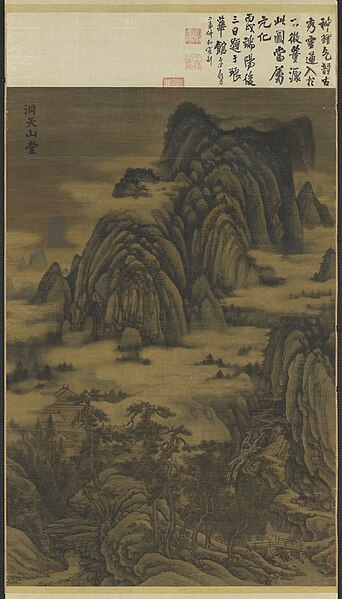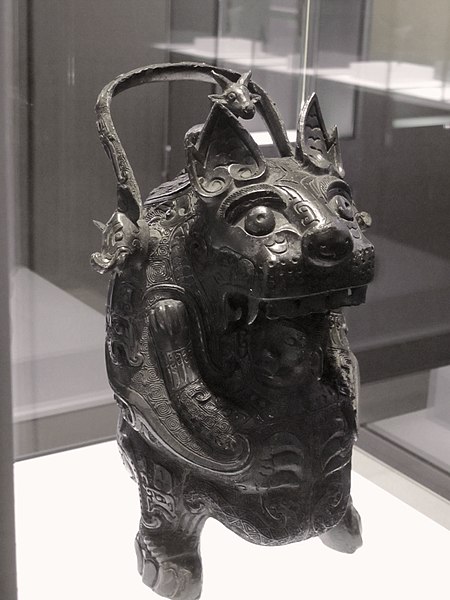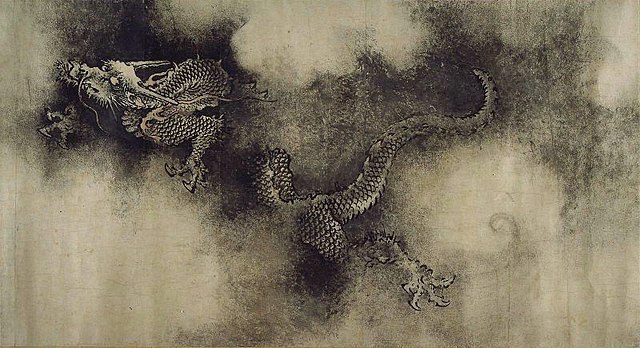Landscape painting, also known as landscape art, is the depiction of natural scenery such as mountains, valleys, trees, rivers, and forests, especially where the main subject is a wide view—with its elements arranged into a coherent composition. In other works, landscape backgrounds for figures can still form an important part of the work. Sky is almost always included in the view, and weather is often an element of the composition. Detailed landscapes as a distinct subject are not found in all artistic traditions, and develop when there is already a sophisticated tradition of representing other subjects.
Joachim Patinir (1480–1524), Landscape with Charon Crossing the Styx, 1515–1524. Patinir pioneered the "world landscape" style.
Themistokles von Eckenbrecher (German, 1842–1921), View of Lærdalsøyri, on the Sognefjord, 1901
Dong Yuan (934–962) Dongtian Mountain Hall (Chinese: 洞天山堂圖). 10th century, the Five Dynasties (Chinese). National Palace Museum, Taipei.
Landscape with scene from the Odyssey, Rome, c. 60–40 BCE
Chinese art is visual art that originated in or is practiced in China, Greater China or by Chinese artists. Art created by Chinese residing outside of China can also be considered a part of Chinese art when it is based on or draws on Chinese culture, heritage, and history. Early "Stone Age art" dates back to 10,000 BC, mostly consisting of simple pottery and sculptures. After that period, Chinese art, like Chinese history, was typically classified by the succession of ruling dynasties of Chinese emperors, most of which lasted several hundred years. The Palace Museum in Beijing and the National Palace Museum in Taipei contains extensive collections of Chinese art.
Two flasks with dragons; 1403–1424; underglaze blue porcelain
Auspicious Cranes by Emperor Huizong depicting a scene on top of Kaifeng city gate, 16th January 1112.
Shang bronze vessel, 2nd millennium BC
a section of the Nine Dragons scroll, 1244 CE








